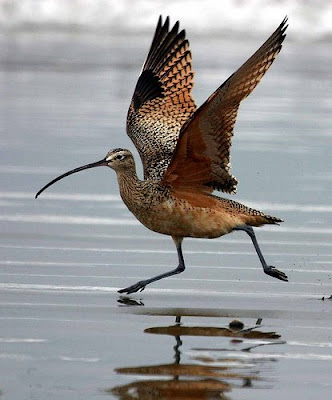 Long-billed Curlew - photo by Mike Baird
Long-billed Curlew - photo by Mike Baird(http://www.flickr.com/photos/mikebaird/323625972/)
Long-billed Curlews (http://fishandgame.idaho.gov/cms/tech/CDC/cwcs_appf/Long-billed%20Curlew.pdf) nest in grasslands throughout the central and western US. An area of Bureau of Land Management (BLM) land roughly bordered by Emmett, Middleton, Parma, and Sand Hollow in SW Idaho has historically hosted one of the densest breeding populations in the state and this is where we'll be working. I'm excited to get a chance to work (scientifically, that is) with a new species!! Field work is set to begin in April and we may be seeking volunteers so keep in touch if interested.
 Flammulated Owl - photo by Greg Lasley
Flammulated Owl - photo by Greg Lasley(http://www.greglasley.net/Images/Flammulated-Owl-0010.jpg)
Flammulated Owls (http://fishandgame.idaho.gov/cms/tech/CDC/cwcs_appf/Flammulated%20Owl.pdf) nest in coniferous (mostly Ponderosa Pine and Douglas Fir) and aspen forests throughout the western US and parts of Mexico. They are a neotropical migrant (winter range largely in the New World tropics; in this case, pine and pine-oak forests of Mexico and northern Central America) that typically arrives to the state in early May and departs in September or early October. We've studied this species at Lucky Peak during fall migration for a decade but this will be our first opportunity to study these birds during the breeding season. Partly because of its nocturnal habits and possibly also its vocal similarity with the larger Long-eared Owl, relatively little was known about this species & its distribution until the last 30+ years and there's still much to be learned - including population status. We're working together with IDFG to develop a long-term monitoring program for this species and 2009 will be a pilot year. Survey areas are yet to be determined but field work will begin in mid-May.
Cheers,
Jay
Cheers,
Jay





 (including an adult Iceland Gull we found!) but we've also seen a bunch of other cool birds,
(including an adult Iceland Gull we found!) but we've also seen a bunch of other cool birds, 